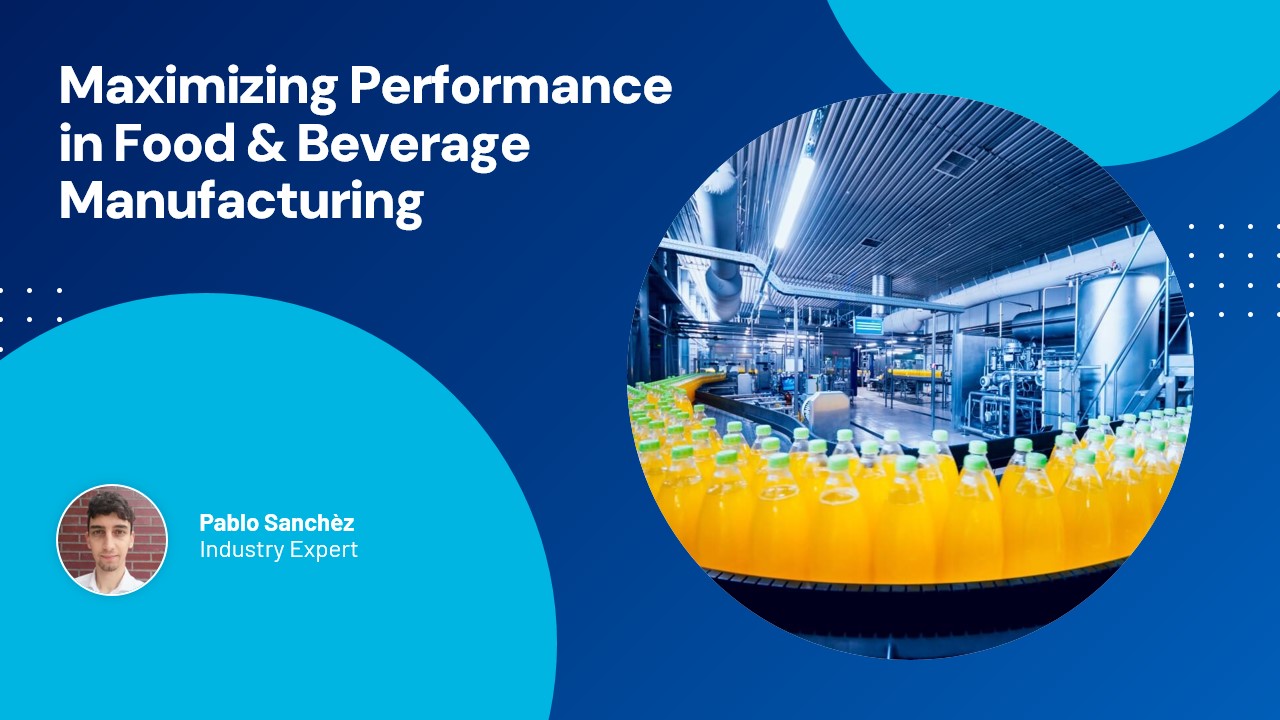

The powder coffee production line includes extraction, evaporation, and spray drying, with buffer tanks between each stage. Extraction is the bottleneck—slowest to convert, yet most critical. Key goals:
- Ensure extraction runs 100% of the time at nominal speed
- Manage buffer storage during evaporator cleaning (CIP)
- Maintain steady feed to the spray dryer
- Prevent downtime and maximize throughput
The Approach
- Real-Time Tracking: monitored tank levels, flowrates, and asset status in a 360° dashboard to visualize production capacity and buffer utilization.
- Forecasting Capacity: calculated total available storage and projected how many hours extraction could run uninterrupted—even during CIP events, using derivative-based formulas in the formula builder.
- Line Balancing: adjusted cleaning schedules and buffer usage to prioritize continuous extraction. With all data in the dashboards, teams can predict and monitor when CIP can be carried out or when there's insufficient storage.
- Dashboards: implemented intuitive visualizations to guide operations, coordinate teams, and avoid bottlenecks.
Insight By centralizing tank and asset data, the team forecasted downtime impacts and kept extraction running—even when evaporators were offline—avoiding unnecessary stops. Overlapping maintenance events resolved through real-time capacity forecasting.
Results
Takeaway
With predictive buffer tracking and cleaning coordination, the team unlocked consistent extraction, smarter scheduling, and a 7% boost in throughput—powered by real-time data and operational alignment. Want to optimize your production flow? Let’s talk.
The powder coffee production line includes extraction, evaporation, and spray drying, with buffer tanks between each stage. Extraction is the bottleneck—slowest to convert, yet most critical. Key goals:
- Ensure extraction runs 100% of the time at nominal speed
- Manage buffer storage during evaporator cleaning (CIP)
- Maintain steady feed to the spray dryer
- Prevent downtime and maximize throughput
The Approach
- Real-Time Tracking: monitored tank levels, flowrates, and asset status in a 360° dashboard to visualize production capacity and buffer utilization.
- Forecasting Capacity: calculated total available storage and projected how many hours extraction could run uninterrupted—even during CIP events, using derivative-based formulas in the formula builder.
- Line Balancing: adjusted cleaning schedules and buffer usage to prioritize continuous extraction. With all data in the dashboards, teams can predict and monitor when CIP can be carried out or when there's insufficient storage.
- Dashboards: implemented intuitive visualizations to guide operations, coordinate teams, and avoid bottlenecks.
Insight By centralizing tank and asset data, the team forecasted downtime impacts and kept extraction running—even when evaporators were offline—avoiding unnecessary stops. Overlapping maintenance events resolved through real-time capacity forecasting.
Results
Takeaway
With predictive buffer tracking and cleaning coordination, the team unlocked consistent extraction, smarter scheduling, and a 7% boost in throughput—powered by real-time data and operational alignment. Want to optimize your production flow? Let’s talk.
Access now
Subscribe to our newsletter
Stay up to date with our latest news and updates.
Other Webinars on Demand
Press Play on Operational Improvement
Other Resources
Explore Our Newest Content to Maximize Your Operational Efficiency





.jpg)





